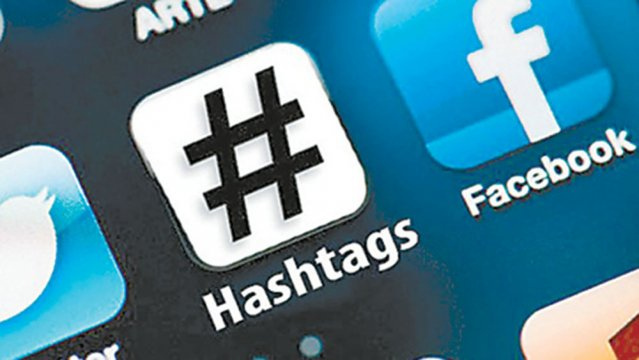The Evolution of Text & Technology
Willinksy (2002) discusses John Dewey’s thoughts on democracy, extending beyond politics and into the realm of education. Something that really resonated with me was the idea that democracy is founded on community and shared experiences- a notion that is certainly being enforced through the Internet, and the communicative tools that accompany it.
Close analysis of 120, 421 short stories written by children between the ages of five and 13, led the Oxford University Press to declare the word “hashtag” as the UK children’s word of the year (Berenson, 2015). Hashtags were incorporated into their stories as words or phrases, preceded by a hash (#) symbol, meant to reiterate overarching themes or messages. It is interesting to note, that while the use of hashtags originated on social media, the majority of the children who submitted their work did not hold accounts on such websites as Twitter and Instagram (Berenson, 2015). What could this say about the influence of technology-based trends on education today?
Just as we perused the Oxford English Dictionary in order to delve deeper into the origins of “technology” and “text”, I decided to explore “hashtag”. Much like the meaning of technology has evolved to reflect the tools and activities associated with specific time periods, the hash (#) symbol has seen the same sort of evolution. The hashtag is currently used to categorize a post, picture, or resource, based on its relation to a particular subject. This mechanism originated on social media, and in some cases, acts as a comedic oral expression.
In technical contexts, the “#” symbol is referred to as an octothorpe, the 1996 definition of the which is broken down into “octo-“, meaning eight, and “-thorp”, which is an Olde English word for village. The definition even goes on to regard the “#” symbol as representing a village with eight fields surrounding it (“octothorpe, n., OED Online). Although this breakdown has seemingly little to do with today’s interpretation of the symbol, I feel as though the notion of a village or community still very much applies.
There is a sense of belonging and connection associated with today’s application of the hashtag, as people categorize themselves and their ideas as if to say “this applies to me as well” and “I’m a part of this movement/event/social trend”. Perhaps the children who had submitted their short stories to the OUP utilized hashtags as a means to identify with the rest of society. From this perspective, it certainly makes sense that the hashtag has become a highly used marketing and promotional tool. However, it has proven to be a powerful tool in raising awareness and educating the public on worthwhile topics as well.
From a personal perspective, I have utilized the hashtag in a past MET group project in order to raise awareness and share some tools we had developed on Connectivism with the twitter community. It was amazing to see our work being shared within and between networks. One of my group members created a Connectivism Infographic, which he shared with the #Connectivism hashtag attached to it, and suddenly dozens of people were asking for permission to use and repost it themselves! #NetworkedLearning #ConnectivismAtWork
References
“octothorp, n.” OED Online. Oxford University Press, September 2015. Retrieved from http://http://www.oed.com.ezproxy.library.ubc.ca
Berenson, T. (2015). The U.K. children’s work of the year isn’t really a word. Retrieved from http://time.com/3899589/hashtag-uk-childrens-word-of-the-year/
Willinsky, J. (2002). Democracy and education: The missing link may be ours. Harvard educational review. 72, 367-392.


Thank you for you post Natalie! A quick note on the octothorpe. Recently 99 Percent Invisible —a great design-oriented podcast— published an extensive report on the origin of the octothorpe, you might want to check it out:
http://99percentinvisible.org/episode/octothorpe/
Hi Natalie,
Great post! Your discussion of the history of the hashtag was very intriguing, and (I think) bang on. Thanks to Ernesto for sharing that detailed post as well! I reshared it on Twitter to a couple of hashtags, including one for our course number and was happy to see a few people sharing there! (#ETEC540 and #UBCMET)
The hashtag plays wonderfully into the development of learning communities in the educational world, too. Groups of educators with similar grade groupings, localities, or special interests gravitate to hashtags that tout their specialities. They can get together for chats at a specified date and time (like #bcedchat that I co-moderate on Sunday evenings), share to a hashtag to get ideas for projects (think #geniushour or #20time), or, more commonly, can tweet to a hashtag for an event or conference (#iste2015, #cuebc, etc). You can see a complete list of Twitter chats here – a great resource: https://docs.google.com/spreadsheet/ccc?key=0AiftIdjCeWSXdDRLRzNsVktUUGJpRWJhdUlWLS1Genc#gid=0
This public and open-source sharing of teacher resources on social media sites like Twitter results in exactly what Willinsky refers to in his article: enhancing “our understanding of our own work as fostering education and furthering democratic participation, just as it holds the love of learning and pursuit of knowledge that has driven so many of us in this line of work.” (p.3). When thinking of colleagues that I have encountered on Twitter, they are just that: democratic participants who simply love to learn!
References:
Willinsky, J. (2002). Education and Democracy: The Missing Link May Be Ours. Harvard Educational Review, 72(3), 367-392